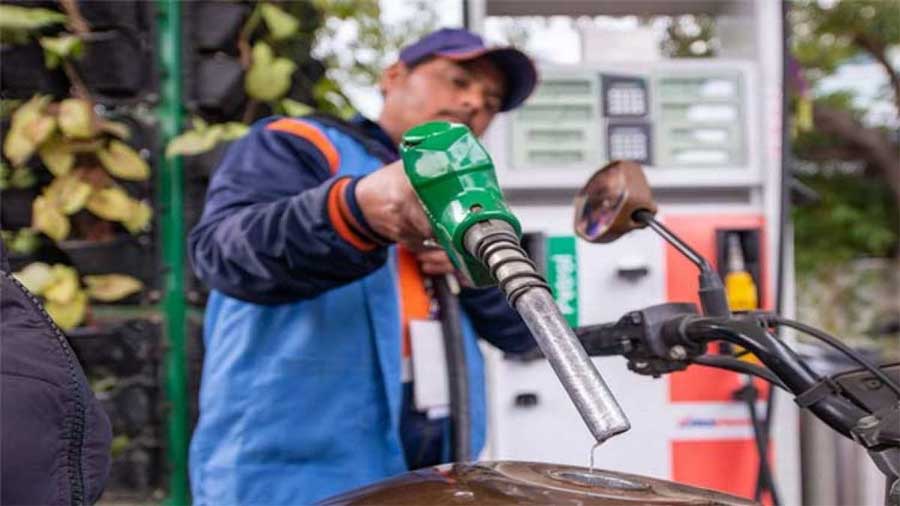KARACHI: The State Bank of Pakistan (SBP) has projected the real GDP growth up to 5 percent for the current fiscal year 2021-22 as per the actual target set for the fiscal year. However, the current account deficit has been projected at up to 3 percent of the GDP as against the actual estimate of 0.7 percent for the fiscal year 2021/22.
In its Annual Report 2020-21 on the “State of Pakistan’s Economy” issued on Wednesday, the SBP said the average Consumer Price Index (CPI) would be around 7 per cent to 9 percent. The remittance inflows and exports have been projected at $32.5 billion and $27.5 billion, respectively, during the current fiscal year; however, the import bill projection has gone up to $63.5 billion as against the actual estimate of $55.3 billion.
Similarly, the fiscal deficit has been estimated to be in the range of 6.3 percent and 7.3 percent for the current fiscal year against the target of 6.3 percent. According to the report, Pakistan’ economy rebounded during FY21, with the real GDP growth rising to 3.9 per cent. Importantly, this expansion in economic activity was accompanied by a 10-year low current account balance that contributed to a significant buildup in foreign exchange reserves.
The fiscal deficit also edged down despite the Covid-related spending, leading to an improvement in the public debt-to-GDP ratio, unlike the experience of most countries across the world.
The headline CPI inflation also eased during the year, mainly due to relatively stable prices of non-food and non-energy items. However, the overall price levels, especially of food items, remained high, owing to supply-side challenges.
The report notes that the economic turnaround was facilitated by exceptional management of the Covid health pandemic, as well as a prompt and targeted monetary and fiscal response to counter its impact on the economic growth and livelihoods.
The SBP’s liquidity support amounted to around 5 percent of GDP by the end of FY21, featuring a combination of policy rate cuts, as well as several targeted and time-bound measures, such as the Temporary Economic Refinance Facility (TERF) for the promotion of new investment, Rozgar payroll financing scheme to prevent layoffs, the refinance facility to combat Covid and to provide concessional financing to construct hospitals and facilities, and temporary loan deferments and restructurings to provide temporary liquidity relief to small and big businesses, as well as individual borrowers.
Other policy initiatives to bolster economic activity included: promoting digitalisation in the economy; temporarily relaxing concessionary credit and realisation and settlement of export proceeds and trade loans; incentivising housing and construction finance and promoting provision of mortgages for the low-income households; and providing forward guidance for the near-term monetary policy stance to facilitate economic decision-making, amid the Covid-related uncertainty.
Similarly, the government provided targeted fiscal support of around 2 percent of GDP through an economic stimulus package, which covered over 15 million families through emergency cash transfers.
In addition, the government introduced various incentives to prop up the activities in agriculture, manufacturing and export sectors during FY21.
The country also retained access to sizable external financing, with inflows received from the International Monetary Fund (IMF) and other multilateral and bilateral creditors; the issuance of Eurobonds after a long hiatus; and deposits and investments from non-resident Pakistanis via the Roshan Digital Accounts.
The report points out that the recovery in exports was driven by the continued adherence to the market-based exchange rate system; provision of subsidised inputs; lower duties on imported raw materials; and the fast-tracking of the general sales tax (GST) refunds. Also, the impact of some deflected orders from competitors, as Pakistan emerged faster from the Covid shock helped boost textile exports.
The higher exports partially offset a significant rise in import payments, which surged, amid the upswing in the economic activity; supply-side challenges in wheat, sugar and cotton; and elevated international commodity prices.
Meanwhile, the fiscal deficit reduced to 7.1 percent of GDP from 8.1 percent in FY20. Restrained non-interest current expenditures allowed for undertaking spending on social safety nets, the economic stimulus package and provision of targeted support to various sectors of the economy.
The development spending also recovered slightly after consistently declining over the last three years; however, the government had to make payments of power sector subsidies to partially clear the circular debt.
The report maintains that addressing deep-rooted structural impediments is crucial for sustaining and improving the current growth momentum. These impediments include consistent decline in the yield of important crops, especially cotton; insufficient export coverage of imports, low and declining productivity of labour, stagnant tax-to-GDP ratio; anemic investment-to-GDP ratio; and the rising fiscal burden of the power sector. – TLTP
SBP projects up to 5pc growth rate & CAD at 3 percent of the GDP
Sign in
Welcome! Log into your account
Forgot your password? Get help
Password recovery
Recover your password
A password will be e-mailed to you.






